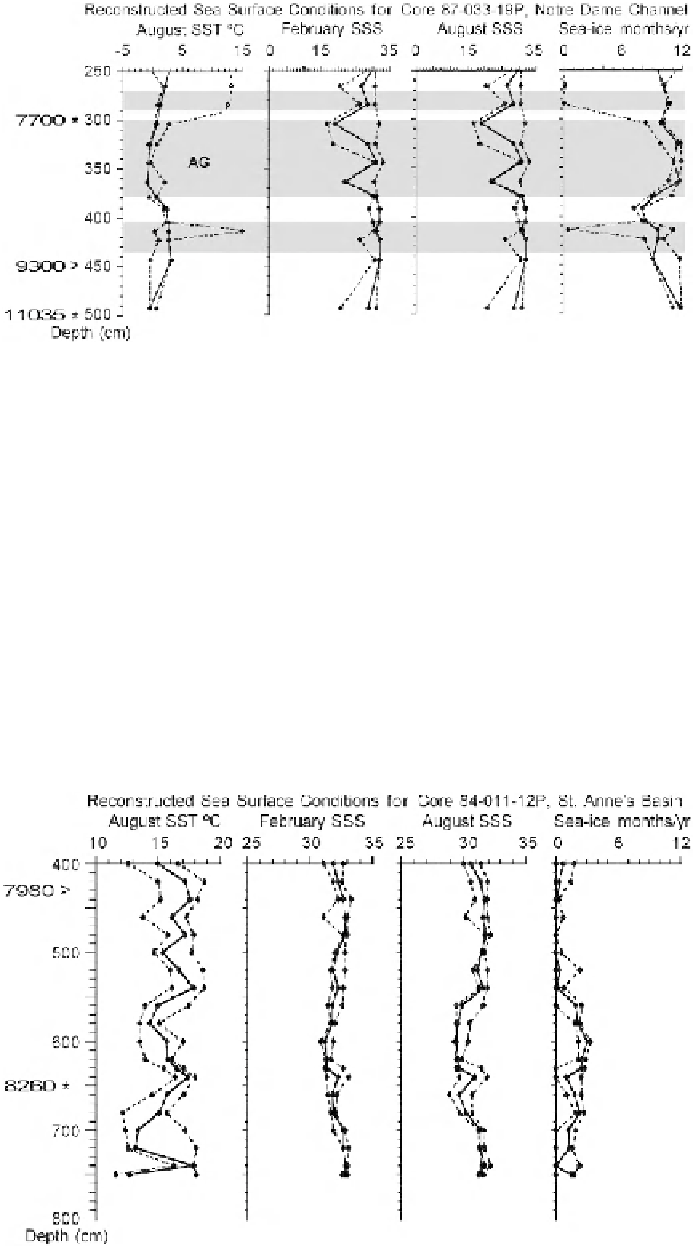Geoscience Reference
In-Depth Information
Figure 12.
Reconstruction of sea surface conditions, core HU87033-19P, from Notre Dame Channel, Northeast New-
foundland Shelf. Calibrated ages are the same as in Figures 6, 8, and 10. The solid line represents the best estimate, while
the space between the dashed lines is the con
dence interval.
a sharp decrease in the proportion of B. tepikiense and
N. labyrinthus relative to zone SA2. Maximum percentages
of S. mirabilis, whose occurrence on the North American
margin does not extend north of the Gulf of Maine today,
occur at the base of the zone, suggesting warmer conditions
than present.
Dinocyst zone SA4 0
-
180 cm (approximately the last
4000 years) is dominated by O. centrocarpum, Brigantedi-
nium spp, and P. dalei, which reaches its maximum relative
abundance in this zone. A peak in total concentrations be-
tween 80 and 100 cm (3.0
P. dalei, and the occurrence of A. choanum. This zone is
similar to the present-day assemblages in surface samples for
the area [Levac, 2002].
5.4. Reconstructions of Sea Surface Conditions
Sea surface conditions were reconstructed for the core 19
250
500 cm interval (Figure 12), which records the Lake
Agassiz outbursts. SSS shows a signi
-
‰
within the DC layer corresponding to the drainage of Lake
Agassiz. Two drops in SSS are centered around 300 and
365 cm. The seasonal duration of sea ice cover also shows
cant decrease to 25
3.22 ka) coincides with lower
percentages of Brigantedinium spp, higher percentages of
-
Figure 13.
Reconstruction of sea surface conditions for core HU84011-12, from St. Anne
'
s Basin, Northeast Scotian Shelf.
Ages are the same as in Figures 7, 9, and 11.










Search WWH ::

Custom Search